Weeki Wachee Springs State Park
Introduction
Text-to-speech Audio
Images
One Weeki Wachee's world-famous mermaids.
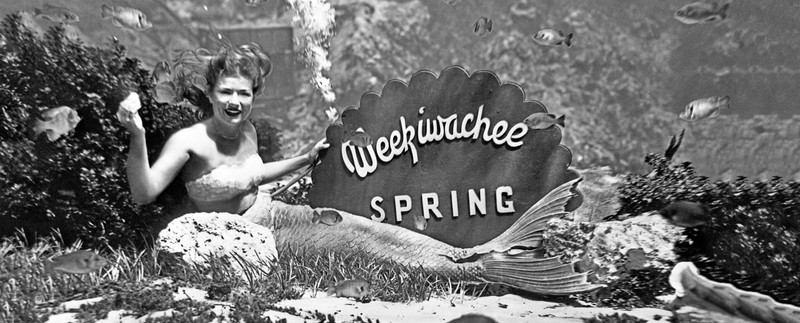
One of the early Weeki Wachee mermaids eating a banana underwater. This was one of the first things that the Weeki Wachee mermaids learned to do underwater. In her right hand is a free-flowing air hose that all the mermaids learn to breathe from.
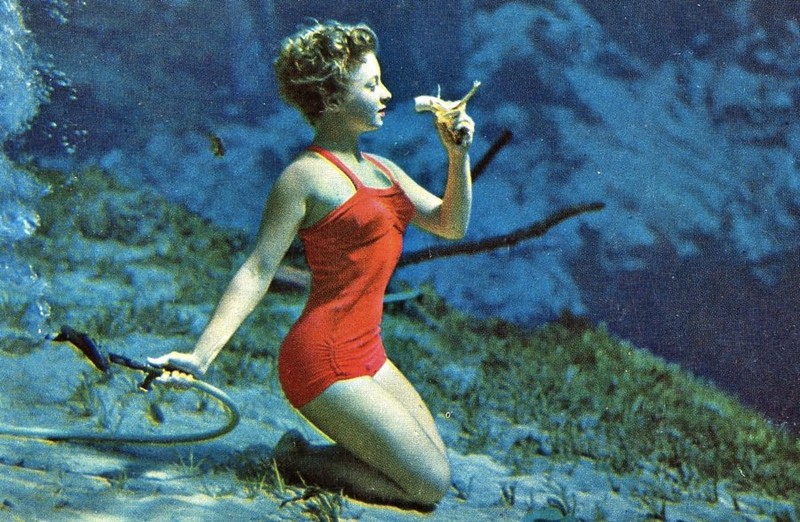
Aerial view of Weeki Wachee Springs
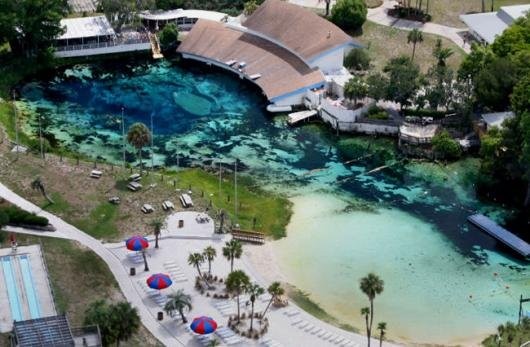
Newt Perry - The man that started it all
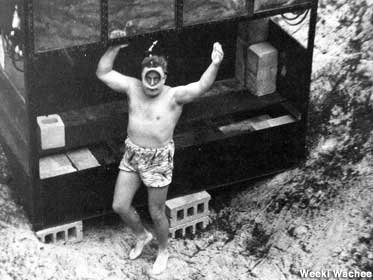
Aerial view of Buccaneer Bay (the water park)
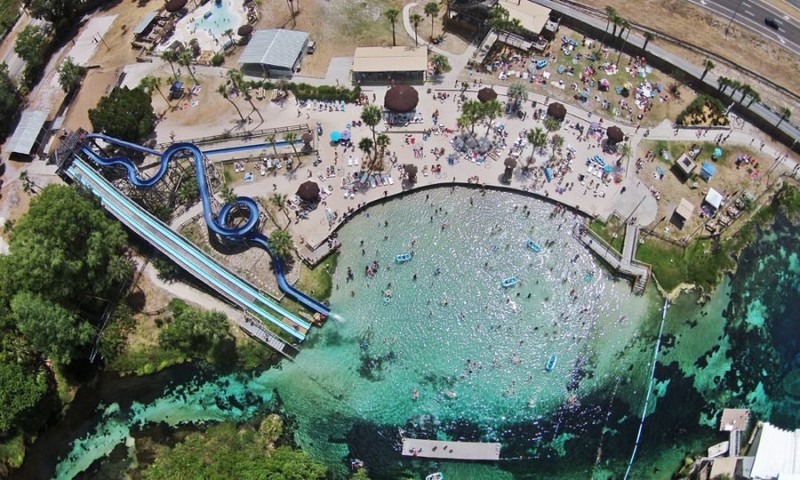
Backstory and Context
Text-to-speech Audio
In 1946, Newt Perry bought Weeki Wachee Springs and cleaned up the springs which to that point had been used as a junk yard for the area of his new business. He invented a new way to breathe underwater without having to have to be hooked to a tank and instead used free-flowing air hoses from an air compressor (Weeki Wachee’s History). The air hoses allowed it to look as if it was possible to breathe underwater without any help. Perry taught women to use the air hoses to breathe and smile while underwater. An underwater theater that sat eighteen people that allowed them to look out at the springs was built six feet under the water (Weeki Wachee’s History). The first show that occurred at Weeki Wachee Springs was on October 13, 1947 where the “mermaids” performed underwater. The girls would do synchronized ballet moves, drink Grapette, and eat bananas underwater during the shows. The famous mermaids got their names not just because they gave the illusion that they could breathe underwater, but also because they would be seen on the roadside of U.S. 19 waiting for someone to pass. They would be in their bathing suits trying to “lure” in people to come watch their show since there weren’t many cars that passed through the area in the 1940s (Weeki Wachee’s History).
In the 1950s, what started as a small roadside attraction at the springs became one of the most popular tourist stops in the United States (Explore Weeki Wachee). The increase in visitors were connected to the tourism upsurge in Florida after World War II. Florida was seen as "the dreams of the good life" and a place to get away for a vacation, especially in the post war era (Mohl and Mormino). In 1950, it was reported that 5 million tourists were coming to Florida (Mohl and Mormino). In 1959, Weeki Wachee was bought by the American Broadcasting Company (ABC) which led to the spring getting more attention across the country and even the world (Weeki Wachee’s History). A new theater was built thanks to ABC that is still in use today that can fit 400 people and is fixed into the side of the spring sixteen feet underwater (Weeki Wachee’s History). ABC added themes to the underwater shows and made them more complex that followed story-lines with music, lifts, and props (Weeki Wachee’s History). Over the years Weeki Wachee Springs has even had movies filmed on the property. One of those movies was “Mr. Peabody and the Mermaid” (Weeki Wachee’s History).
In 1982, Weeki Wachee Springs built Buccaneer Bay which added waterslides and a sandy beach to the springs for visitors to enjoy (Explore Weeki Wachee). The waterpark is unique since the three out of four of its waterslides dump its rider right into the Weeki Wachee Springs (Buccaneer Bay). Weeki Wachee became the “deepest known freshwater cave system” in the country in 2007 when new passages were found in the cave system (Florida State Parks). In 2008, Weeki Wachee Springs became a state park under the Florida State Parks system (Explore Weeki Wachee). The Weeki Wachee Springs State Park offers boat tours, swimming, snorkeling, and paddling for visitors to experience (Florida State Parks). There are areas to have picnics in the park and weddings can even be held at Weeki Wachee (Florida State Parks).
Every day at Weeki Wachee “more than 117 million gallons” of clear water bubble up out and into the spring (Weeki Wachee’s History). Weeki Wachee Springs is “100 feet wide with limestone sides” at the basin (Weeki Wachee’s History). The farther down the spring is traveled, the current’s intensity increases making it extremely hard to swim or stay in one place underwater. The mermaids of Weeki Wachee swim 16 to 20 feet underwater with a current that “runs a strong five miles an hour” as they perform for visitors (Weeki Wachee’s History). The twelve mile Weeki Wachee River that is connected to the basin of the spring dumps into the Gulf of Mexico (Weeki Wachee’s History). What once was a very isolated area has become a very special part of Florida for its tourists and its residents to visit.
Sources
Mohl, Raymond A. and Mormino, Gary R.. "Boom, Bust, and Uncertainty: A Social History of Modern Florida." The History of Florida, 13th ed. edited by Michael Gannon, The University Press of Florida, 2013, pp. 497-527.
Weeki Wachee's History. Weeki Wachee Springs State Park. . Accessed October 17, 2018. https://weekiwachee.com/about-us/history/.
Weeki Wachee Springs State Park. Florida State Parks. . Accessed October 17, 2018. https://www.floridastateparks.org/parks-and-trails/weeki-wachee-springs-state-park.
Williams, Van. Local History. Explore Weeki Wachee. . Accessed October 17, 2018. www.exploreweekiwachee.com/history.
